Prepare your child for a trip to the shore with this autism social story.
We are currently using this autism social story to prepare a beautiful child, who happens to have autism, for her first beach experience. For the purposes of this post, we are going to call her Sandy.
Both of Sandy’s parents have really fond memories of their childhood summer vacations to the shore. They enjoyed the sun, sand and surf during the day and the sights, sounds and sensations on the boardwalk at night. It was something they looked forward to during the long days of winter every year. They have always wanted Sandy to have the same beach vacation experiences, but Sandy, age 6, has never been to the shore. Her parents were concerned about her behavioral issues that arise from a broken routine and from some sensory issues (loud sounds and textures). Sandy has been responding very well to occupational, behavioral and speech therapies for the last two years, so her parents have confidently rented a beach house for a week in Ocean City in August.
I too have vary fond memories of the shore as a kid and as a parent, so when I heard their plans, I was thrilled for Sandy. I told Sandy’s parents about the success that we have had using social stories to prepare children with autism for new experiences like taking their first plane ride or going to their first Phillies game. I promised to create a social story to help. The beach and the ocean are some of God’s greatest gifts to us, so it should be experienced by every one. “Preparing to go to the shore” was created for Sandy and for all children with autism.
Sandy’s parents plan to talk about the trip with their daughter at the same time every day with the autism social story as a guide. At Kidmunicate, we will use the “Preparing to go to the shore” social story during therapy sessions with Sandy too.
See the picture social story below or download the PDF Kidmunicate Social Stories: Preparing to go to the shore. If you want the Powerpoint presentation to customize the story for your child’s specific needs, send us an email.
The Kidmunication Point
New experiences are difficult for many children with autism. Many parents avoid new experiences because the children are happier when they are settled into a routine. This is understandable, but children with autism, like all children, need to experience new things in order to learn. The key is pre-planning. Picture social stories are a great tool to use to prepare your child for any new experience. “Preparing to go to the shore” is our newest social story. A week at the beach in the summer is an annual event for most families around here. Children with autism should experience the surf, sand and the boardwalk, if they can handle the sensorial aspects of a beach vacation like noise, sand, salt water, crowds, etc.
Note: We also use social picture stories for children with anxiety and/or sequencing issues.
Here are 13 tips to prepare your autistic child for a trip to the shore.
- Use this picture story to start preparing your child for the trip to the shore weeks before going.
- We recommend that you read the story every day at the same time during the weeks leading up to the trip
- Customize the picture story by adding or eliminating elements that are not relevant for your child.
- For your child’s first shore trip, you might want to go for a day trip in June or September when it is less crowded.
- For children with sensory or texture issues:
- Buy some sand and let your child touch the sand and play with it. Let them play with both dry and wet sand. Show them how easy it is to wash off.
- Sun protection during your beach time is very important, so apply suntan lotion at home to get them used to that sensation and smell.
- Remember that ocean water is salty, so you might want to bring some goggles.
- The sand can get hot, so you might want to bring flip-flops. Practice walking in them at home.
- When you are ready to go, pack some familiar and comforting items to distract your child during the long car ride, like an Ipad, stuffed animals or action figures.
- It’s a good idea to pack comfort items from his or her room at home for the beach house to make it look more familiar. (For example, his or her favorite sheets, pillow or blanket, etc.)
- Pack noise canceling headphones, if necessary:
- Tell your child that they can put them on whenever they want.
- These may be useful on the beach and the boardwalk
- There are great food options on the boardwalk and beach, but you might want to pack some food.
- Access to food might require a long walk across a hot beach and / or a long wait in lines. A packed snack just might save the day.
- On the first day, go to the beach early in the morning when it is less crowded.
- Let your child get used to the sensation of the sand and the surf.
- Inform the life guard that your child has special needs and may not respond to commands appropriately.
- Take a break from the sun and go to the boardwalk during the day or early evening before it gets too busy.
- The rides are not very crowded during the day.
- Anticipate situations that may trigger issues like:
- Going to the bathroom. Find a beach location close to a restroom.
- Waiting in line for food.
- Sudden loud noises. (Ice cream truck bells, kids screaming, life guard whistles)
- Relax let your child be him or herself. It’s the beach and boardwalk not a quiet theater.


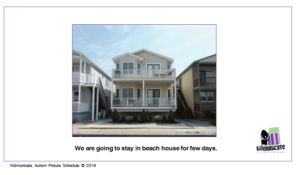
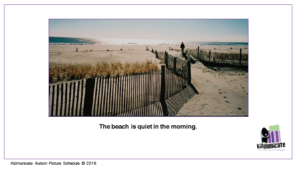
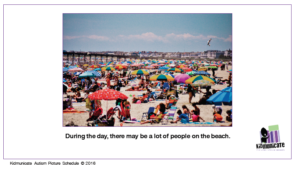
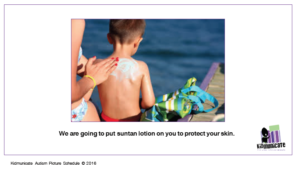
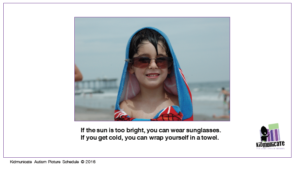
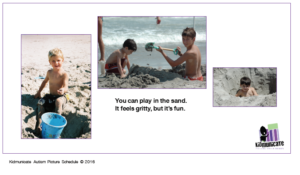
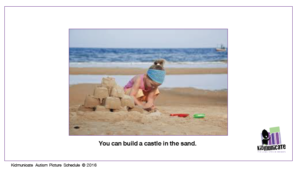
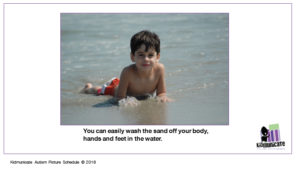
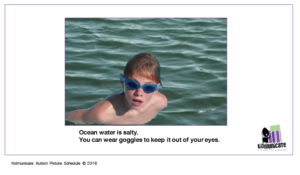
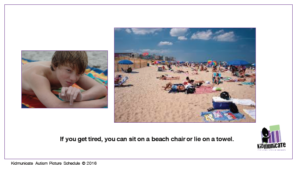
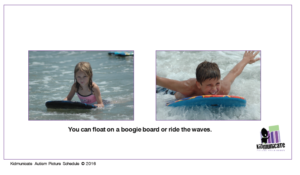

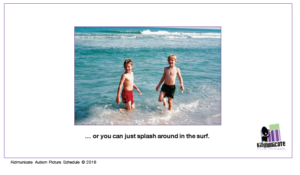
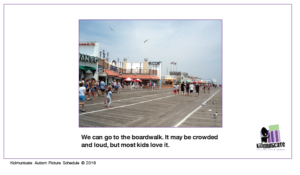
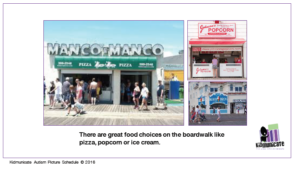
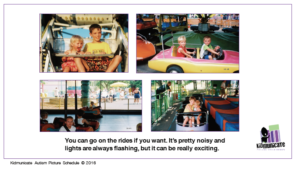
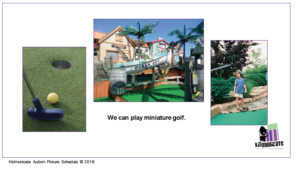
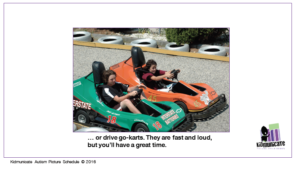
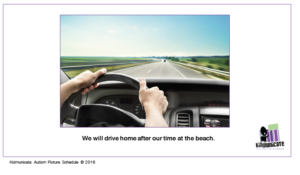

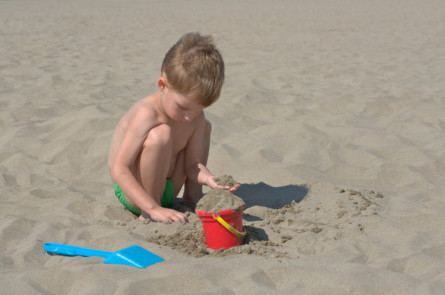
Very helpful.
Thanks.